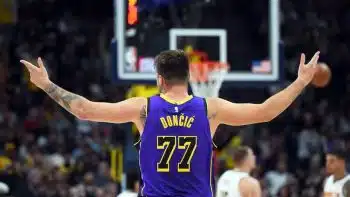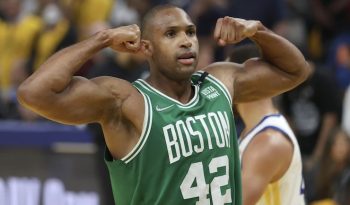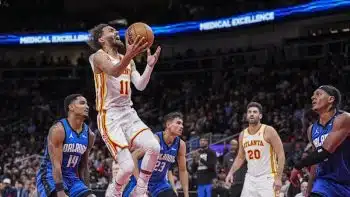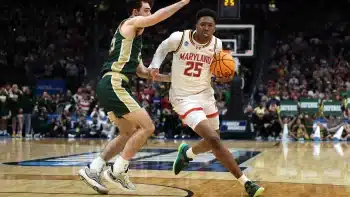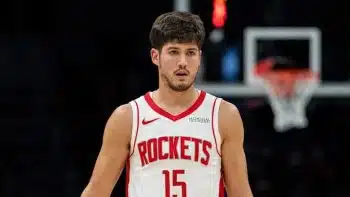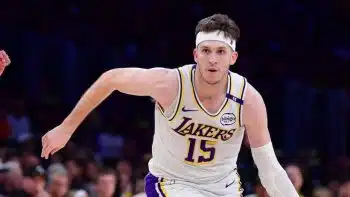NBA
The Worst Values in 2015 NBA Free Agency
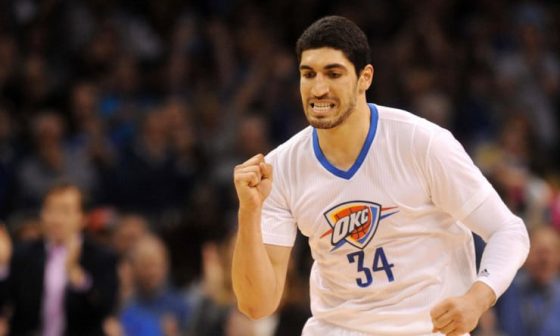
A unique 2015 offseason has left the league in an unfamiliar place. An exploding cap is growing clearer on the horizon and because front offices are still in the process of deciphering the changes and applying them, we have a nearly unprecedented environment: Somehow, it’s become legitimately difficult to hand out a truly awful contract.
This isn’t to say certain deals won’t look bad at some point down the line. Guys get hurt, age strangely and in some cases fall off unexpected cliffs in production. There’s also no guarantee the cap remains intact with a 2017 labor stoppage looming large. But where a typical NBA summer will see at least a handful of deals collectively recognized as anywhere from irresponsible to blatantly ridiculous from the moment they’re signed, this year’s bonanza was docile in comparison. Many teams even found what could be fantastic bargains down the line, which we broke down in yesterday’s article about the best value contracts of the summer.
Even with a historically soft cushion, though, a few GMs managed to hand out deals that raised eyebrows immediately. A big cap jump doesn’t mean teams have unlimited space down the road, and some may feel the burn of a shortsighted move before long. Let’s have a look at a few of the worst values from the 2015 offseason.
Enes Kanter, Oklahoma City Thunder
Kanter has become a divisive topic of league conversation since his trade deadline move from Utah to Oklahoma City following what was effectively a trade demand out of Salt Lake City. The Turkish big man and Jazz brass were reportedly miles apart in extension talks prior to the 2014-15 season, and in trading for him just months before his entrance into restricted free agency, the Thunder appeared to make a commitment to matching his asking price if necessary, which they did when Portland put a four-year, $70 million offer on the table.
In a vacuum, Kanter isn’t worth anything close to this figure based on his four years in the league thus far. He’s an immensely talented offensive big man, with a varied post game and at least respectable shooting range out as far as 18 feet, but that’s mostly where the positives end. Kanter has shown virtually no ability to make plays for teammates despite often drawing doubles or extra shows on the block; per Synergy Sports, the rate of teammate shot attempts derived directly from a Kanter kick-out in the post was among the lowest in the league for high-volume back-to-the basket guys last season. He improved here marginally in Oklahoma City, but remains an extremely score-first option down low.
His more well-known criticism is on the defensive end, and the critiques are deserved. Kanter might be the worst defensive rotation big man in the league. ESPN’s Real Plus-Minus metric certainly thinks so, labeling him the worst center in the NBA for Defensive Real Plus-Minus by a considerable margin over anyone who played in a similar number of games.
The eye test matches up: Kanter is limited both horizontally and vertically, and worse yet lacks even a basic understanding of the sort of positioning and know-how that allows savvy guys to cover up physical disadvantages. Time spent last year with respected defensive minds in Quin Snyder (who transformed a league-worst Jazz defense into one of the scariest in the game in a few short months) and Scott Brooks seemed to have little effect. Kanter is miles behind and often seemingly apathetic, and has dragged down the defensive efficiency of both his teams considerably while on the floor. Even the presence of Serge Ibaka wasn’t enough to cover his warts, with OKC posting a bottom-10 per-possession defensive figure even when their stalwart shared the court with him.
Now, value isn’t determined in a vacuum. There’s a lot of context at play here, not the least of which is the assets OKC surrendered to bring Kanter on board. But it’s still tough to see these confounding factors weighing the scales down much. The Thunder already have Ibaka, who’s a better shooter than Kanter and contributes positive value on defense. And with superstar creators in Kevin Durant and Russell Westbrook, it’s fair to wonder whether this offense really needs Kanter’s skill set and whether they should have surrendered anything of value for him in the first place.
OKC brass is banking on a change of scenery and coaching to help nurture his continued development. He’s still only 23, and with the futures of Durant and Westbrook uncertain, Kanter could serve as an insurance policy of sorts. But he has so much ground to make up in certain areas, and has offered so little proof that he’s capable of doing so. If he can’t make major strides, $17.5 million a year could be a thorn in a typically frugal front office’s side even with an increasing cap.
Rajon Rondo, Sacramento Kings
Rondo makes this list for more reasons than simply his eventual dollar figure, though this alone is cause for concern as well. Specifically, one has to wonder how a player who has shown no sign of being a positive on-court contributor for three years could command $10 million a year from a team that had no competition whatsoever for his services. Sacramento should have worked to get him for a cheaper number with Rondo’s camp holding very little leverage.
But even more worrying are the surrounding circumstances. The Kings didn’t simply sign Rondo. They sacrificed multiple real assets, including 2014 lottery pick Nik Stauskas, in part for the right to overpay a guy who left a burning trail in a typically excellent locker room environment in Dallas just a few months prior.
What’s worse, allowing Rondo to take a single-year deal seems curious if the Kings truly believe he can be reformed. If he has the same sort of disastrous effect he did on the Mavericks, his reputation among the league’s other 29 teams will remain mostly unchanged; if he puts it back together and resembles his 2012 self, he hits the unrestricted market again just as the cap explodes. Even if the Kings wanted to hold onto him at this point, it’d surely cost them even more to do so. Had they held out for a lower annual cap hit and perhaps a team-friendly kicker like an option or a partial guarantee – something any team signing this sort of problem child is well within their rights to ask for – they’d still have maintained some semblance of control.
Aron Baynes, Detroit Pistons
Baynes’ signing won’t break the bank in Detroit, but he’s another case where it seems a team bid itself up to a level they need not have reached. The Pistons gave Baynes, already 28 and with very little track record against NBA rotation players, more than the midlevel exception on a three-year deal, a curious move when his projected range was several million less per year and there appeared to be little competition for him on the market.
He won’t need to be more than a bench cog to justify his figure somewhat, but this is no certainty. The Pistons also acquired Ersan Ilyasova, who should start alongside Andre Drummond, and Baynes will be left to fight for backup minutes with Marcus Morris, Joel Anthony, and perhaps even Stanley Johnson if Detroit looks to downsize certain lineups. He could end up being an upgrade on any of these guys, but could just as easily be a downgrade, and the Pistons didn’t need to spend this sort of money to find out.
Thaddeus Young, Brooklyn Nets
Young makes sense as a fit in Brooklyn. He’s on the list simply because his dollar figure and number of years seems somewhat outlandish. Keeping him made complete sense for a Nets group that was heavily limited while operating well over the cap. But why invest over $12 million annually over four years, including a player option in the final one, for a guy whose value won’t be anywhere near that high even when the cap jumps?
Young has actually appeared to decline over the last couple years, a late-season boost in Brooklyn notwithstanding. He’s advertised as a floor-stretcher, but this has recently been more in reputation than reality. Last year was his first cracking the 33 percent mark from three-point range (barely) since age 20, and his numbers from deeper mid-range are somewhat awful. He’s athletic and can put the ball on the floor, and has improved in the last few years as a passer. But he’s also one of the worst rim protectors in the league among big men, per Nylon Calculus’ Seth Partnow’s figures, not a great sign for a Brooklyn team badly lacking interior defense since Kevin Garnett’s departure.
The Nets had very little choice but to re-sign Young, but should have pushed for a much lower figure. Every dollar will still count down the line, even if they count slightly differently.
Omer Asik, New Orleans Pelicans
We’re nitpicking here, but again, it’s truly difficult for teams to sign legitimately awful deals that can be recognized as such right away this summer.
However, like Young, Asik received more money and years than he’s likely to be worth under any cap figure, and in Asik’s case, he got it despite the Pelicans likely holding all the leverage. Asik was moderately helpful last season, particularly defensively, but it’s fair to wonder whether Alexis Ajinca, under contract for the next four years, can’t approximate much of his value. Everything in New Orleans revolves around Anthony Davis, and Pelicans’ lineups featuring the Brow alongside Ajinca actually fared better on both ends of the floor than those with Davis and Asik. There’s noise surrounding these figures, but Ajinca does appear to overlap with much of Asik’s skill-set.
What’s more, Asik is already 29, and plays in a league where his sort of player is beginning to diminish slightly in value. He’s slow and incapable of guarding any position but center, and while his rim protection is good, he’s mostly a zero on offense. With Davis blossoming into a superior defender and a guy like Ajinca in the wings, it’s strange the Pelicans gave Asik up to five more years under contract at an eight-figure cap hit, by the end of which he could be 34 years old.
